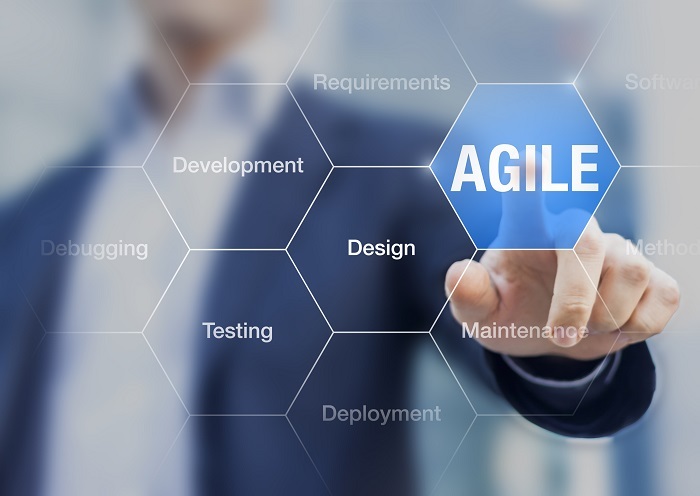
 Data Structure
Data Structure Networking
Networking RDBMS
RDBMS Operating System
Operating System Java
Java MS Excel
MS Excel iOS
iOS HTML
HTML CSS
CSS Android
Android Python
Python C Programming
C Programming C++
C++ C#
C# MongoDB
MongoDB MySQL
MySQL Javascript
Javascript PHP
PHP
- Selected Reading
- UPSC IAS Exams Notes
- Developer's Best Practices
- Questions and Answers
- Effective Resume Writing
- HR Interview Questions
- Computer Glossary
- Who is Who
Program Life Cycle Management
The success of a program depends on its various related projects. To ensure that the project's success is carried out successfully, managing a program involves implementing a series of transformations. These transformations allow the project to move to its next phase once it reaches its closure state.

The concept of the program life cycle is similar to that of project management. While program management focuses on achieving the goals and benefits of the project, project management aims to deliver the products and services that the organization has promised. In the next section of this article, we will talk about the various characteristics of the program life cycle management.
Life Cycle Phases Overview
The life cycle of a program begins once the funding for it has been approved and the program manager has been appointed. This usually occurs during the formulation stage. Each phase of a program goes through various phases, such as the definition of the program, the benefits delivery, and the closure.
The program manager is responsible for overseeing the various activities of a program during its life cycle. Understanding the life cycle phases and the typical activities that occur during them will help him or her make informed decisions during the next phase.
What Does a Program Mean?
The program definition is a process that describes what a program is all about. It involves defining the goals and how they will be done. This stage involves two major activities. These activities are further elaborated in subsequent sub-phases.
The first step in this process is to create a business case that describes the desired outcomes and the program's strategic objectives. Then, a high-level plan is created to guide the activities that will be carried out.
The program definition phase ends with the development of a comprehensive program management plan. This step is divided into two phases: formulation and preparation. In the following section, we will talk about the various phases of program lifecycle management.
Program Preparation and Formulation
The lifecycle of a program involves multiple phases. A phase is defined as the period of time that a series of activities and events take place during the development of the project. The program's successful tenure is determined by the dominant five phases.
Conceptualization Phase ? The development stage of a program is the formulation stage, which involves gathering information about the expected benefits of the project and developing a strategy for achieving its goals. This process is carried out iteratively.
Set up Phase ? The organization stage is where the details of a program's technical blueprint and business case are developed. This process is carried out iteratively.
Construction Phase ? The deployment stage is where the capabilities are delivered through the various actions and projects of the program. This is a cyclical process.
Implementation Phase ? The appraisal stage is where the program's stakeholders and the management team assess the progress of the project toward its operational benefits.
Closure Phase ? The dissolution stage is where the parties involved reach an agreement regarding the timing and grounds for the termination of the program.
Conceptualization Phase
The program's objectives and goals are then determined by the executive committee and its members. These will be supported and approved by the other stakeholder groups. The boards of directors of an organization carry out a selection procedure before they approve a program. This process involves coming up with a mandate that explains the various advantages and disadvantages of implementing the program.
The program brief is also known as the program mandate. It provides the minimum and maximum goals of the program, as well as its various benefits. The selection and implementation of programs are carried out according to certain key elements.
The objectives of a program are designed to help the company achieve its long-term goals.
The program risk factors are analyzed, and the appropriate resources are identified.
The budget for the program is then prepared to estimate the benefits that it will provide to the company.
Setup Phase
The program's setup phase begins once the approval of the program has been made. This stage involves identifying the factors that will allow the program to achieve its goals.
The objectives of this stage are to identify the factors that will allow the program to achieve its goals, develop a management plan, and examine the various risks that will affect the project's development.
The program manager then categorizes the projects that are associated with the project based on the various factors that have been identified. The evaluation stage also involves defining the time estimates, establishing the sequence of activities, evaluating the budgets and cost estimates, determining the procurement of materials, and identifying the risk factors. Other decisions include the appointment of a management team and staff allocation.
Construction Phase
The construction phase is a vital part of the lifecycle management process as it involves developing the technical and management teams that will carry out the program's activities.
The project managers, program managers, and team members follow the proper regulations and rules in order to carry out their duties. There are various tools that the program manager uses to keep track of the activities of the project.
The technical base team is composed of individuals who are responsible for carrying out the program's goals and activities.
Program Management Office/Board ? The members of the program management board are mainly focused on reviewing the progress of the project and ensuring that the organization's goals are met.
Program Director ? The program director is the person who has complete control over the program.
Program Manager ? The program manager is a key member of the team and is responsible for overseeing the various projects and activities of the organization.
Executive Sponsor ? An executive sponsor is a person who is involved in making decisions related to the program. They are also associated with the office of the program manager.
Program Office ? The program office is responsible for ensuring that the members of the team are following the company's strategic goals. It also monitors the project's performance.
Program Team ? The members of the program team are also associated with the program manager in order to help him improve the team's performance. The objective of the program is to provide the necessary support and direction to the project managers in achieving their goals.
Implementation Phase
After the team members have been identified and the program is started, the managers and members of the organization will start implementing the tasks that will help the company achieve its goals.
The program's completion phase is focused on documenting the achievements and failures of the project. This is a stage where the parties involved reach an agreement regarding the timing and grounds for the termination of the program.
Program Closure ? The goal of the program closure process is to create an orderly and controlled end to a program. This phase involves two sub-phases: the transition and the close-out.
Program Transition ? The transition phase involves identifying the goals and ending the program on a positive note. It also involves ensuring that the benefits of the program are documented and fused with the ongoing project. This step is usually triggered by the need for an overlap in the schedule to perform quality checks and maintain deliverables.
Conclusion
The management of programs is a process that involves working with the various stakeholder groups to develop a strategy and implement the plan. It helps executives make informed decisions and improve the efficiency of their organizations.
Through the program management process, executives can identify the areas of their organizations they want to improve and develop a strategy that will help them achieve their goals. Program managers can also help them deliver effective and measurable results.
They will understand the role they play in the program's success. Technical and operational users will also benefit from the process as they will be able to monitor the progress of the project and make necessary adjustments.

